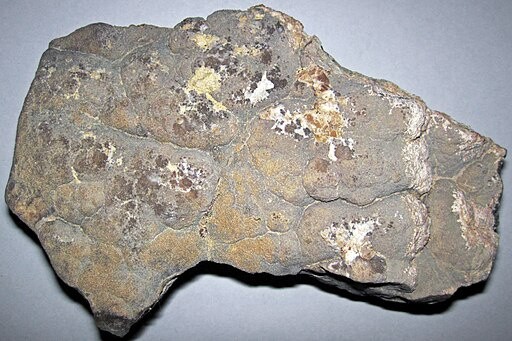Reddit has been a constant source of amazing stories that sound too good to be true, although some come from credible sources. The latest example comes from a user named Kidipadeli75, a dentist who was shocked after discovering something embedded in his parents' new travertine tile.

Renovation Relic
The man, who chose not to provide his identity, decided to visit his parents in Europe after they had their house renovated. He spotted something unusual in one of the floor tiles, and upon closer inspection, it appeared to be part of a human jawbone, still with a few teeth on it.
In his post on Reddit, the man explained that he could recognize the bone because he is a dentist. The mandible appeared to have been cut at an angle and embedded in a hallway leading to the home's terrace. It reminded him of the CT scans he reviews at work. According to him, he specializes in implant dentistry, and he works with this familiar kind of image every day.
The jawbone was found in a tile made of travertine, a limestone typically forming near hot springs. The specific tile used in his parents' house came from a quarry in the Denizli Basin of western Turkey. Since the travertine excavated there formed between 0.7 million and 1.8 million years ago, it suggests that the jawbone did not come from a person who died just recently, possibly from a hominin.
According to geologist Andrew Leier from the University of South Carolina, this jawbone discovery is somewhere between uncommon and familiar, although it is not strange. Fossils can be found anywhere travertine tile is found. For instance, the travertine-clad Getty Center in Los Angeles is a treasure trove of fossils, such as animal feet, algae, feathers, bacteria, and leaves.
Since the anonymous man posted about the discovery, an international team of researchers has contacted him and offered to work with him on a plan to remove the tile for study. They have also initiated discussions with the company that sold the tile in hopes of searching for additional remains in their pieces of travertine from the same quarry.
While fossils are often found in travertine, hominin fossils are much less common, according to archaeologist Kristina Killgrove. She noted that this newly discovered mandible is a hominin's lower jawbone, cut transversely through the middle.
What is a Travertine?
Travertine is a calcium-rich limestone that is often mined and cut for tile. As a common and desirable material for tiles, travertine is cheaper than marble, and its veins of calcite crystals give it an attractive appearance.
It forms when a change in chemical conditions causes dissolved calcium carbonate to harden into solid rock. Since this stone solidifies in layers, travertine tiles have their distinctive and visually appealing look. These layers can trap anything that falls into them, like feathers, leaves, and even dead animals.
Travertine forms near natural springs, like Mammoth Springs in Yellowstone National Park. In these bodies of water, many large and small animals live and die. When they die, their remains are trapped in the sedimentary rock until dug up to tile someone's home.
RELATED ARTICLE : 1.5-Million-Year-Old Hominin Fossil May Show How the Oldest Human Species Lived, Evolved
Check out more news and information on Fossil in Science Times.
© 2026 ScienceTimes.com All rights reserved. Do not reproduce without permission. The window to the world of Science Times.











